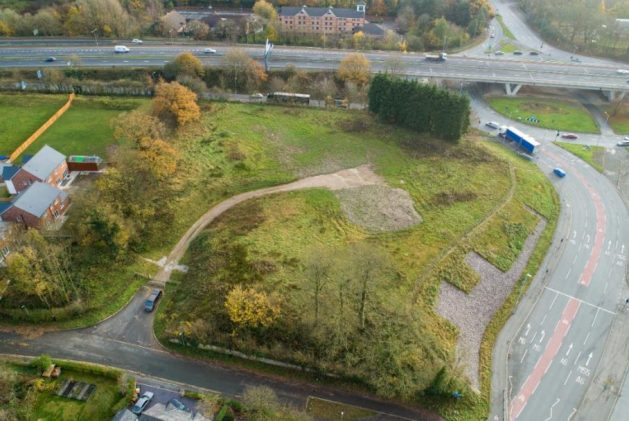Outline plans for the contentious development face rejection amid concerns over traffic safety and the appearance of the mosque – which is currently the subject of an international architectural competition.
An unnamed charity working with retained architects Cassidy + Ashton Group is the agent behind the scheme, which would see a large mosque built on a 2.2-acre site to the south of D’Urton Lane.
With visibility from the M55, M6 and Broughton bypass, it is a prominent spot. That is one of the key background points in the mosque’s design competition, which is being run by the Royal Institute of British Architects. The results of that competition are due to come out in mid to late August.
The competition asks architects to design a “landmark” structure that is no taller than three storeys. It should hold a large prayer hall with a capacity for 450 prayer mats and circulation space. The building should also be zero-carbon or as close to that as possible. It calls for a minimum of 140 car park spaces to be included in plans, as well as disabled spaces and electric charging points.
Because the competition is ongoing, it is not yet known what the mosque might look like. That uncertainty played a factor in Preston Council’s director of development and housing recommending the application for refusal.
In the report, the director wrote that without an idea of the appearance, scale or layout of the mosque it is not possible to know the level of harm the proposal may cause to the setting of nearby listed buildings, including the grade two-listed Parish Church of St John the Baptist.
The site itself was also objectionable. Although it is a former brownfield (having been used as a temporary construction compound and storage area for Lancashire County Council), it is open countryside. That makes building on it contrary to the spatial strategy in the Preston Local Plan, according to the director.
The director’s other concerns included worries over traffic regulation and parking from the mosque might impact highway safety. Consultations with County Highways and Highways England offered no objects to the plans.
Proposals for the mosque also faced objections in the form of 427 letters. Ben Wallace MP was among those voicing objections to the plan. He cited concerns about traffic on D’Urton Lane, the visual impact of the building, and fears of damaging the nearby Guild Wheel Cycle route.
Broughton Parish Council also objected, stating that it did not want a decision made on the plans until a design was available. The parish council also said that local residents had not expressed a need for a local mosque.
However, those for the mosque argued that the 652 letters received in support of the application made clear that there was, in fact, a need for a new mosque.
Preston’s planning committee will discuss the application at its 8 July meeting.

